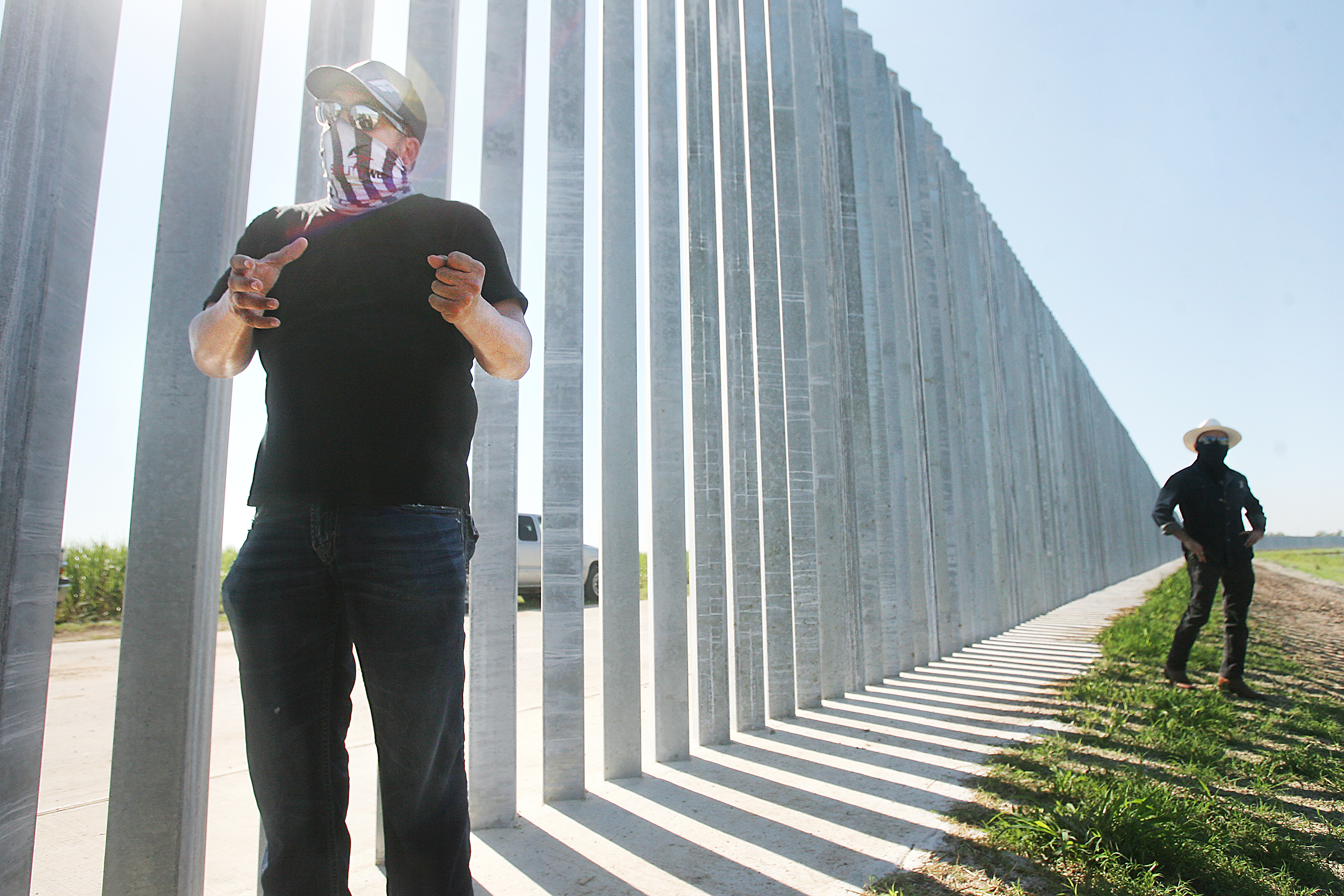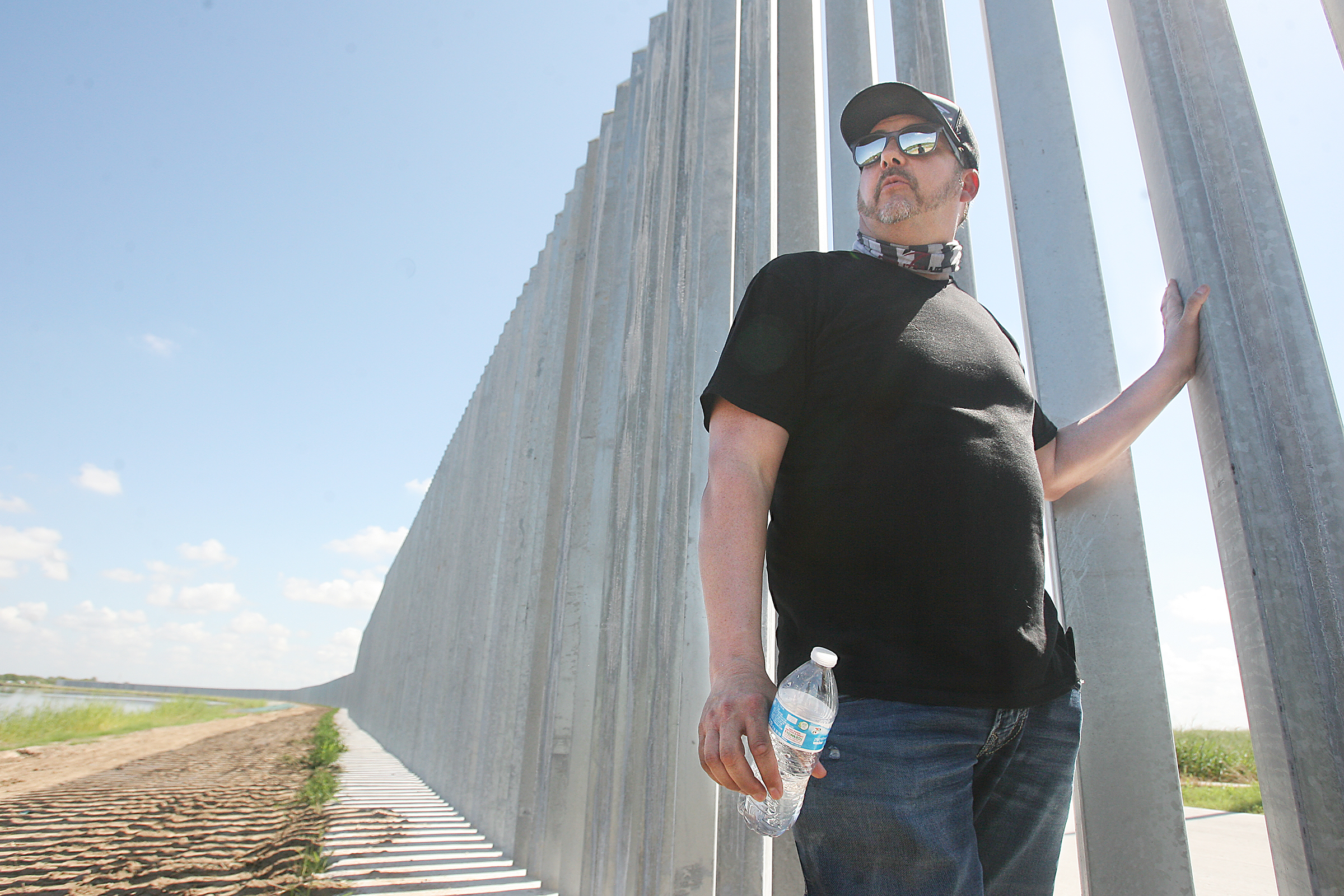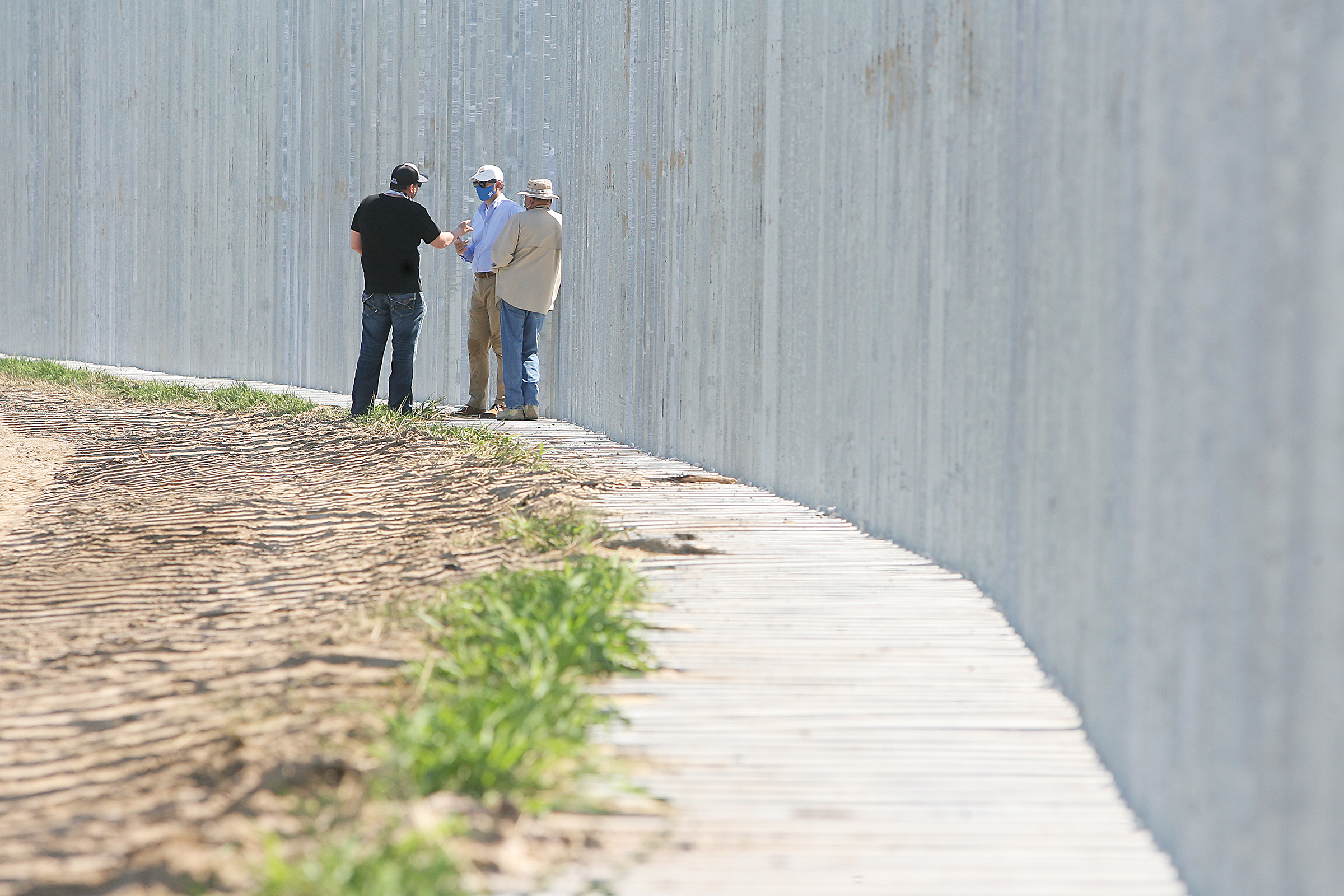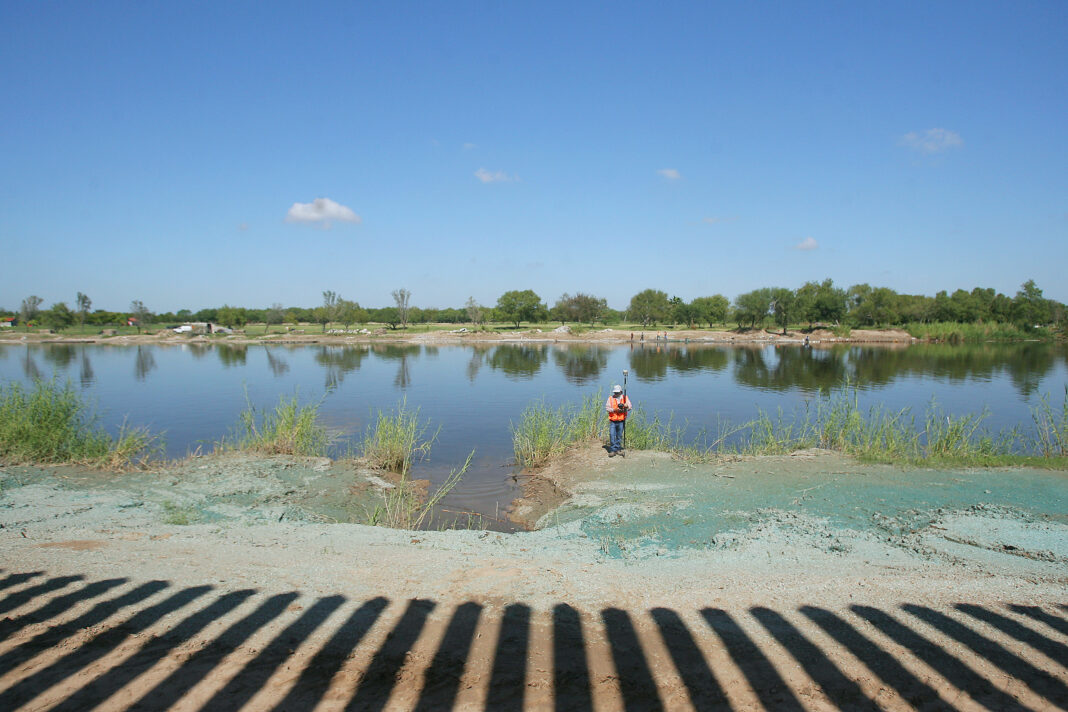After spending nearly the entirety of the last two years in a holding pattern, the National Butterfly Center is one step closer to learning if it can begin working in earnest on the lawsuit it filed against a cadre of individuals responsible for building a private border wall adjacent to their property.
It was during a status conference held in federal court Wednesday that the center learned the judge presiding over the case — U.S. District Judge Randy Crane — will soon make a decision over whether he has jurisdiction to hear the lawsuit.
And it was also then that the judge lifted a stay on discovery that has thus far prevented the butterfly center from deposing witnesses, gathering significant material evidence, and otherwise preparing for trial.
HOW IT STARTED
The North American Butterfly Association filed the suit on behalf of the butterfly center in December 2019, alleging that the then-under-construction wall would infringe upon its property rights. The center also claimed that the group of defendants had defamed its executive director, Marianna Treviño Wright.
The center sued the man responsible for building the structure — North Dakota construction magnate Tommy Fisher — along with his companies, Fisher Industries and TGR Construction, as well as then-landowners, Neuhaus and Sons.
It also sued a highly prolific conservative fundraiser, Brian Kolfage, and his nonprofit, We Build the Wall.
The organization pledged to help then-President Donald Trump build a border wall along the nation’s southwest border, and ultimately went on to contribute funding to two of Fisher’s projects — a half-mile stretch of wall in Sunland Park, New Mexico, and the 3-mile riverside stretch just south of Mission.

Almost immediately after the butterfly center filed its suit in state district court, however, it found the case being moved up to federal court to be heard alongside a separate lawsuit filed on behalf of the International Boundary and Water Commission.
In that suit, the federal government alleged that the structure would put the United States in violation of a 1970 international boundary treaty with Mexico by potentially altering the flow of the Rio Grande and the centerline that demarks the boundary between the two nations.
Crane decided that the cases lent themselves to being heard in tandem, given the similarities in their defendants and case matter.
Both suits named identical defendants — at least until We Build the Wall was dropped from the government’s suit after admitting they had only contributed about $1.5 million toward the $40 million project.
Both the organization and Kolfage remain named defendants in the butterfly center’s suit, however.
And though the legal questions at stake in each are quite distinct — international law, in the case of the government’s suit, and property rights in the case of the butterfly center’s — the evidence underpinning them — the wall itself — remains the same.
DELAY IMPACTS
Since December 2019, Crane has held more than a dozen hearings in the lawsuits. All but Wednesday’s have been held jointly with the IBWC’s case.

Crane has held those hearings and made decisions — including granting and then rescinding a temporary restraining order against the Fisher defendants, as well as setting a February 2022 trial date — before he has decided whether he even has the legal authority to exercise jurisdiction in the matter.
Javier Peña, the butterfly center’s attorney, has maintained from the start that the lawsuit’s arguments are state law matters. Nonetheless, he acknowledges that the judge’s pending jurisdiction decision will have profound impacts on how the lawsuit moves forward.
“I think the real work is starting now. It’s going to be a little problematic doing discovery on We Build the Wall when there’s no one to send it to at this point,” Peña said.
He was referring to the fact that We Build the Wall’s attorneys were recently allowed to withdraw from the case.
For months, Crane has prohibited the butterfly center from conducting discovery on We Build the Wall after its attorneys, David Oliveira and Thomas Haskins, revealed they had not been paid for their services.
That was due to federal prosecutors in New York filing criminal charges against principal members of the organization, including its founder, Kolfage, as well as former presidential adviser Steve Bannon, and two other men.
Prosecutors allege the men fraudulently used We Build the Wall’s funds to line their own pockets. As a result, the government froze We Build the Wall’s bank accounts and other assets.
And for months, Oliveira and Haskins made numerous assurances that a resolution to the financial situation was just around the corner.

Those assurances were later echoed by Kris Kobach, the former Kansas Secretary of State and current candidate for that state’s attorney general seat, who serves as general counsel for We Build the Wall.
Kobach has attended and spoken during several hearings, though he is listed on the court docket as “attorney not of record” and has not made a formal appearance in the case.
Those assurances persuaded Crane time and again to grant We Build the Wall significant latitude in the lawsuit, staying discovery against them so as to not force its attorneys to work for free.
WHERE THINGS STAND NOW
Last month, Crane finally allowed Oliveira and Haskins to withdraw their services, giving the organization just 30 days to find new representation. The judge acknowledged, however, the difficulty in the task, given the likelihood that new attorneys would also go without pay.
He also asked Kobach to attend — if not officially “appear” at — Wednesday’s hearing, but the attorney was a no-show.
Nor did anyone else appear. For now, the organization will proceed without legal representation at all.
And though the stay on discovery applied only to We Build the Wall, that order had repercussions on the butterfly center’s ability to conduct discovery on the remaining defendants. Peña could not depose those other defendants without We Build the Wall being able to meaningfully participate, he said.
Exacerbating the issue, Fisher has been slow-going in turning over documents generated in the government’s lawsuit against him — documents that Crane ordered be shared with the butterfly center.
“They’ve admitted they got those reports from the government and they’re failing to get it to us,” Peña said.

Fisher’s attorney, Mark Courtois, maintains the documents are privileged.
“Is the government asking you not to share these in the other case, or is that just something you all have elected to do?” Crane asked Courtois during the hearing.
“I can’t speak to a lot of that directly at the moment. I can tell you that the reports are wrapped up in the settlement discussions and because we’re undergoing those discussions with the government currently,” Courtois said.
Peña expects he’ll be forced to file a motion to compel Fisher to hand over the documents.
But all that legal wrangling may become moot — to a degree — if Crane decides he doesn’t have jurisdiction over the case and remands it back to the state district court where it was originally filed.
If that were to happen, Peña likens it to nearly starting over from the beginning. The butterfly center will have to present many of its issues all over again to a new judge — from its arguments over discovery, to other motions and filings.
Essentially, the last 22 months of waiting have added up to what Peña says would make for an interesting case study for law students.
“This case has followed a very strange path. One of the more stranger cases I’ve been involved in, you know — from that fence going up in violation of treaties, TROs being lifted, and then with COVID and all the delays, and parties just ignoring discovery requests, ignoring the court’s, essentially, verbal order to appear at the next hearing — it’s not a standard case at all,” Peña said.
He continues to prepare for several possible outcomes, including going to trial in February, or presenting the case anew to a different judge.
Before calling Wednesday’s status conference to a close, Crane set another for two months from now, but also added that he expects to hand down a decision regarding jurisdiction “in the interim.”




